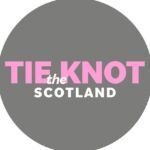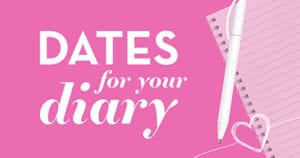Do you know your sporran from your sgian dubh, or your Prince Charlie from your Argyll? What’s the difference between a three-button and a five-button, and does it matter?

When choosing a kilt, fabric is king – so don’t skirt around the issue. “The best place to start is with the tartan,” says Lyndsey Strachan at McCalls. “If the groom is looking to purchase his own outfit and hire outfits for the wedding party, he may need to think about whether he would like a kilt uniform for everyone or whether he would prefer to stand out from his groomsmen.”
The jacket’s fabric can also act as a base, but the territory is complicated by a choice of tones and prints, of wool, twill and tweed, and of the many clan tartans and their more generic counterparts. At Slaters, for instance, there are 90 fabrics to choose from just for jackets. The brand’s Stuart Graham offers a good strategy. “Visit a wedding fair first with your partner,” he says. “Then research the options online and visit a store – the earlier the better – as this will ensure you have an idea of the variety of styles and colours available to you.”
What makes a Highlandwear outfit? If you’re starting from square one, some understanding of the elements needed to complete the look and the history behind them will help. “Highlandwear originates from the mountainous landscapes of northern and western Scotland and was essentially hillwalking gear,” explains Alasdair MacLeod of kiltmaker Geoffrey (Tailor). “This gradually developed into a symbol of Scottishness which can now take its place alongside the most formal traditions of dress.”
And the outfit? “It consists of kilt, jacket with (or, rarely, without) waistcoat, kilt socks, garters with coloured flashes, leather day or evening ghillie brogues, sporran, kilt pin, sgian dubh, shirt and tie.”


Relaxed as Highlandwear may be these days, respecting original etiquette goes a long way and, in some cases, is still considered necessary, especially if you’re going to wear the Prince Charlie (the dark, angular jacket with silver buttons shown below). “This is traditionally the most formal jacket set,” explains Lyndsey. “If you pair it with a low, three-button waist-coat, it restricts you to wearing a bow tie.
The Argyll set, with a higher, five-button waistcoat, can be worn with a straight tie or cravat and is available in tweed, in black herringbone and charcoal (to maintain an element of formality) or in more casual green tweed.” Alasdair makes a further distinction: “A Prince Charlie jacket is very much still eveningwear and would probably look out of place at a daytime wedding, but the Argyll is classed as semi-formal and is thus suitable for day and evening.”
Unless you are marrying after 5pm, Stuart suggests grooms should opt for the Argyll jacket over the Prince Charlie: “Most wedding ceremonies take place in the early afternoon, which accounts for the rise in popularity of the Argyll, which is deemed a day jacket rather than black-tie wear.”
With its roots firmly in heritage, the kilt can be worn as history intended or remixed for more fashion-conscious grooms. The appeal is in its flexibility. “To create a more contemporary look, you can wear a tweed kilt, maybe with a matching jacket and waistcoat, to create a kilt suit,” says Lyndsey. “We have been trying to bridge the gap between the traditional and the suit jacket, by removing the epaulettes and reducing the buttons. These are still formal but allow you to break from the norm.”
If in doubt, look to the buttons. Tradition dictates chrome, so try a modern dark fastening – it’s sometimes the smallest changes that make the biggest difference.








